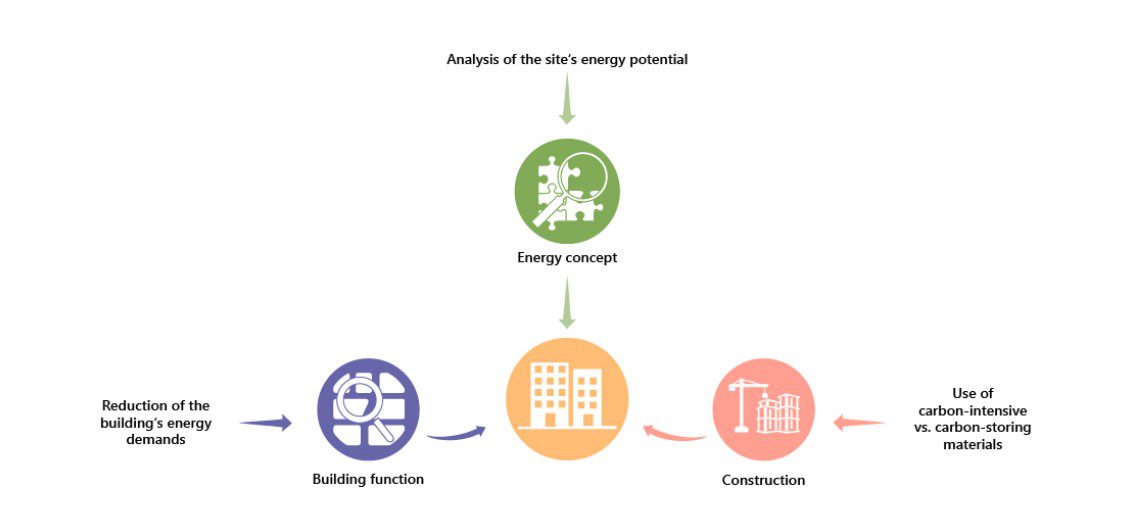What is a truly holistic approach to designing for Net-Zero Carbon?

News Detail

Year:
2023
Source:
Buro HappoldBuildings can play an active role in achieving net-zero carbon. For this to happen, we need to develop a holistic approach to designing new projects.
While today it can often feel as though building sustainably is a matter of meeting requirements, receiving accreditations and ticking the appropriate boxes, in order to truly do the least harm to the environment we need a more holistic approach to design. Designs should be based on a synergy between project programme, construction methodology and energy demand. When combined and considered simultaneously and with equal priority, these three aspects offer a way for architects, engineers and builders to arrive at net zero.
Whole life net-zero carbon as the new standard
When we talk about a green transition in the building industry, we increasingly talk about net-zero carbon buildings. Net zero refers to the carbon emitted by the construction and operation of a building, counterbalanced by the energy generated on-site and exported to the grid. There are two ways in which a building can contribute to carbon emission: through embodied carbon, linked to the emissions associated with sourcing materials and construction processes, and through operational carbon resulting from the day-to-day use of a building.
Net-zero carbon can be reached by using carbon-neutral construction materials, such as timber, or by offsetting the emissions related to the construction of a building over time by generating renewable energy on-site. Building with net-zero carbon as a goal must become a guiding principle in the architecture, engineering and urban planning professions.
A project’s success in achieving net-zero carbon relies on an approach that balances three key aspects:
- the energy concept
- the building function, including reduction of the building’s energy demands
- the construction, including the use of carbon-intensive or carbon-storing materials.
Adopting a holistic approach to these aspects fundamentally changes the planning process. Building sustainably is no longer only about receiving certifications, but rather about reading a project and a context closely to identify opportunities and make the right, specific decision.
More info